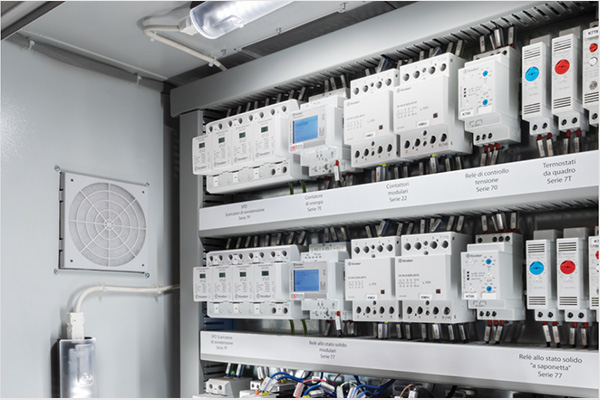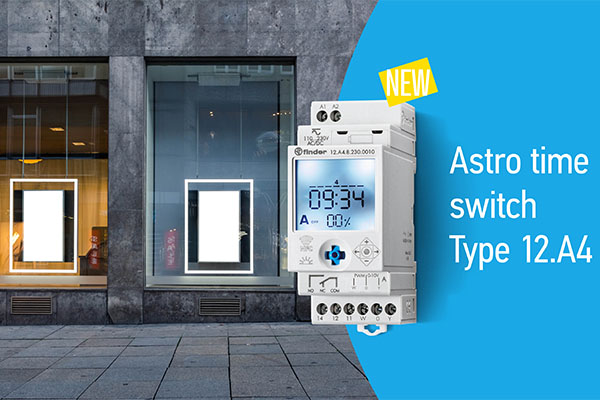Choosing the right time switch
A guide that can help you to choose the most suitable smart time switch.
Finder has a wide range of smart time switches that are more practical and easier to programme than traditional time switches, primarily because they can be programmed via an app on your smartphone. It can be difficult to decide which type is most suitable when there are so many to choose from – and this guide can help you make that choice.
Automating the switching-on and switching-off of appliances and infrastructure such as lighting or heating is now a must, driven by the needs for comfort and energy savings.
The most common residential and commercial building automation systems operate using time switches or timers of one sort or another. This helps us optimize energy savings whilst going about our day-to-day activities. However, choosing the right time switch depends on what you wish to achieve.
To make things easier to understand it’s helpful to separate Finder’s range of time switches into:
- Daily/Weekly time switches
- Astro time switches
The way they function is fundamentally different, so choice will depend on the requirements of the specific application. However, there are time switches that incorporate the key elements of both – as we will see.
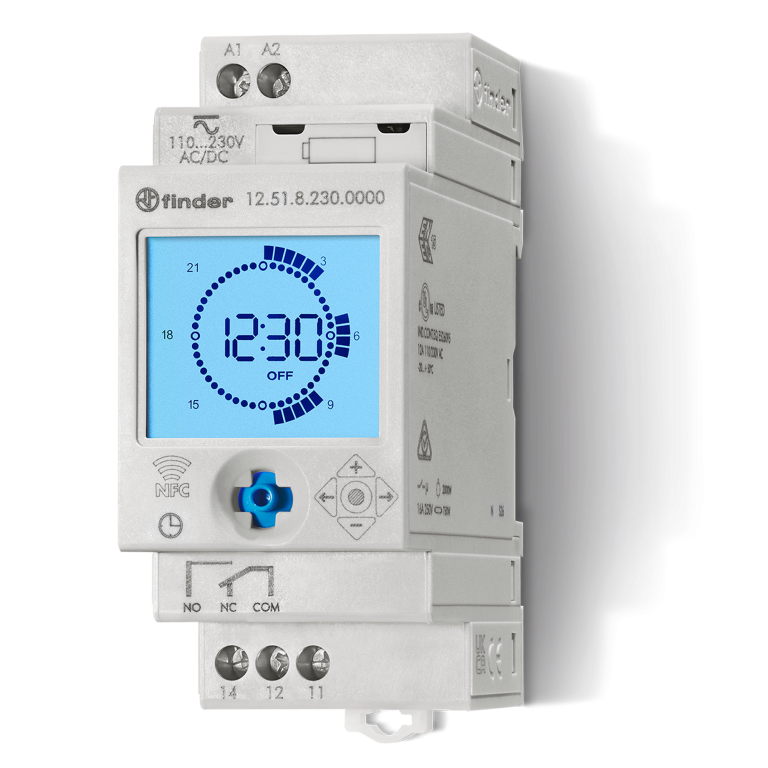
Daily/Weekly time switches
With a daily/weekly time switch you can program, either manually or using the dedicated Finder Toolbox app, a sequence of on/off time periods, which will be controlled by the device from Monday to Sunday.
With a Daily time switch the time sequence will be the same every day.
With a Weekly time switch, the time sequence can be the same or different for each day of the week.
Finder’s entry-level daily/weekly time switch is the Type 12.51 – 1 CO 16 A with a minimum programming interval of 30 minutes.
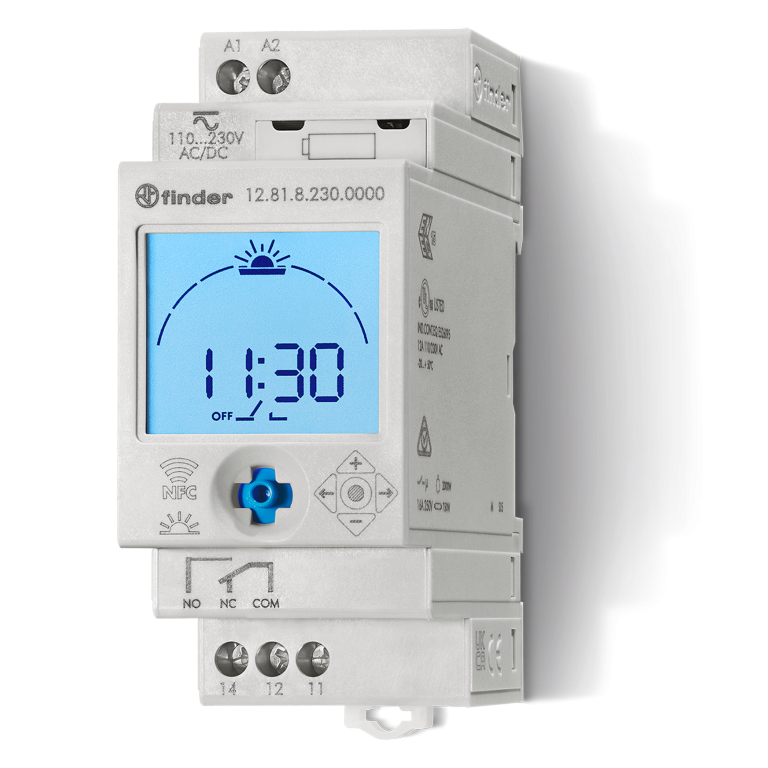
With an Astro time switch you can programme the device to switch-on and switch-off at sunset and sunrise (or at times offset from these Astro times). By inserting the postcode or the geographical latitude/longitude of the location where it is installed, the device will perform the same function automatically day in, day out.
The most popular Finder time switch dedicated to Astro applications is the Type 12.81 – 1 CO 16 A, which can combine the Astro mode with a “Off-On night mode”, enabling you to force an Off period within the Astro On period.
Example of Off-On night mode: A display sign is required to switch-on at sunset and switch-off at sunrise, which can be arranged using the Astro function. In addition, it needs to be forced Off between the hours of 1:00 am and 5:00 am, and this can be programmed using the Off-On night mode.
Time switches with additional features
The evolution of these devices has led Finder to develop new models with additional features, suitable for specific customer requirements:
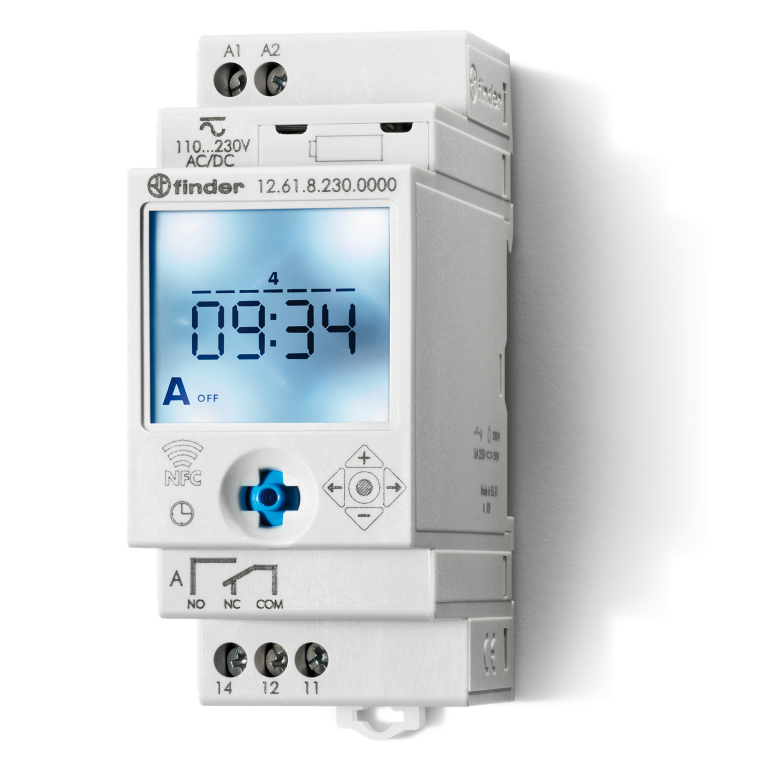
Types 12.61 and 12.62 Daily/Weekly time switches
1 or 2 CO 16 A, which have the same features as the Type 12.51, but differ in having a minimum on/off programming interval of 1 minute and an additional “Pulse” output function, which can be programmed from 1 second to 59 minutes
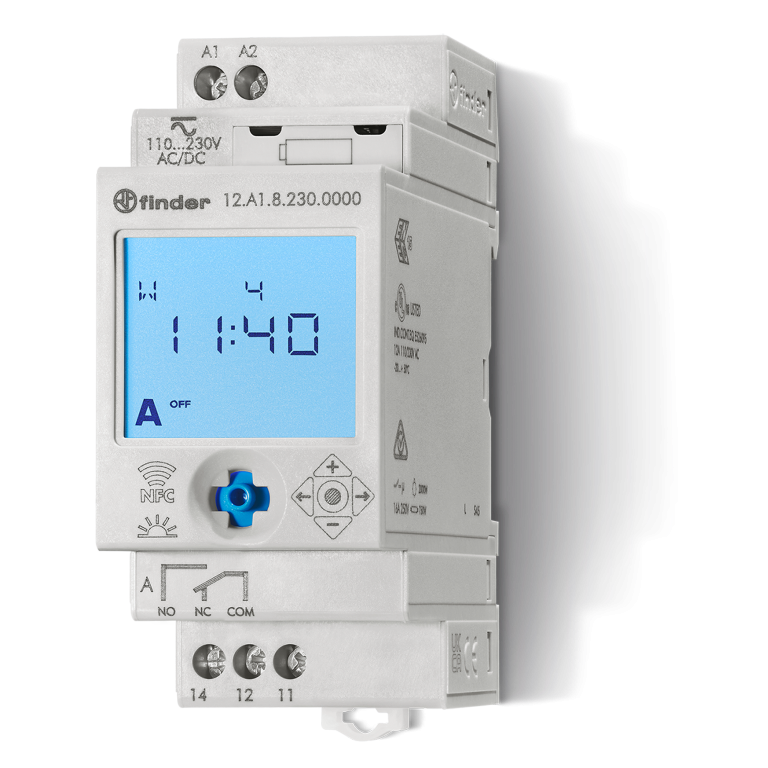
All Finder digital time switches can be programmed via NFC technology using the dedicated Finder Toolbox app – and come with a buffer battery which makes the initial set up before panel installation extremely easy. All have automatic summer/winter time change.
Electro-mechanical Daily/Weekly time switches
For those not wishing to go with the newer technology, and whom are perhaps looking for a classic time switch, Finder has a range of traditional electro-mechanical time switches, such as the Types 12.01 and 12.11 (day) and Type 12.31 (day/week).
